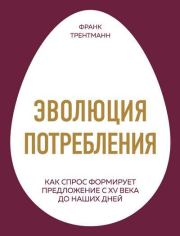Рашид Шафигулин - Культурная эволюция Homo sapiens
История изобретений: от освоения огня до открытия электричества | Название: | Культурная эволюция Homo sapiens |
Автор: | Рашид Шафигулин | |
Жанр: | Культурология и этнография, Биология, Научно-популярная и научно-познавательная литература, История техники, Современные российские издания | |
Изадано в серии: | неизвестно | |
Издательство: | Издательские решения | |
Год издания: | 2022 | |
ISBN: | 978-5-0056-0801-7 | |
Отзывы: | Комментировать | |
Рейтинг: | ||
Поделись книгой с друзьями! Помощь сайту: донат на оплату сервера | ||
Краткое содержание книги "Культурная эволюция Homo sapiens"
Книга про историю культурного развития и прогресса человечества. Историю возникновения важнейших изобретений человечества. Огонь, керамика, погребения, кремация, украшения, охра, гребни, колокола, татуировки. Выплавка металлургии — медь, бронза, железо. Изобретения стекла и электричества. Какова основные причины этих изобретений, что их объединяет? Почему культурные достижения и прогресс связаны именно с Homo sapiens?
На все эти вопросы пытается ответить наша книга.
К этой книге применимы такие ключевые слова (теги) как: история цивилизации, история человечества, эволюция человечества, антропология, антропогенез, человеческий организм, научные гипотезы
Читаем онлайн "Культурная эволюция Homo sapiens" (ознакомительный отрывок). [Страница - 2]
- 1
- 2
- 3
- 4
- . . .
- последняя (7) »
What were the combs and mirrors found in numerous excavations used for? Was their appearance caused by the desire of their ancestors for beauty or by social necessity? Or maybe they served the observance of the simplest hygiene? The reader learns the author’s position from the book.
How did a person learn to melt metals and what prompted him to do this?
The book tells about the history of their production and use, as well as about why humanity switched to completely new smelting technologies and mastered metals such as copper, bronze, iron.
But the Bronze Age ended in a real disaster for many countries. At the end of it there is the collapse of the Mycenaean kingdoms, the Hittite kingdom in Anatolia, Syria, Egypt is falling into decline. The collapse of culture throughout the Middle East and the Eastern Mediterranean is accompanied by a political and economic collapse, in which, in parallel with the decline of some civilizations, new civilizations and new ideologies were born. Scientists cannot come to a general conclusion about the causes of the «Bronze Age catastrophe».
It was at the same time (XIII century BC) that the transition of mankind from polytheism to monotheism took place. Why is the change in the religious views of our ancestors associated with the crisis period?
Glass producing has opened up new opportunities for humans. Of course, it all started with the simplest glass products. But with the development of physics and optics, it turned out that glass allows you to make unheard-of discoveries. Thanks to glass, new specific optical devices have appeared, designed for various physical and physico-chemical studies, spectral analyses. All astronomical discoveries are made with the help of a telescope. Without glass, we would not be able to enter the space age. But we are interested in when and why Sapiens began to get the first semblance of glass from sand. The book will tell you about this too. And after a person went from simple glass blowing to the production of vacuum flasks and connected it with electricity (another scientific breakthrough), humanity received the first lighting lamps, rapidly broke into the age of computer science and the atomic era.
The book will interest not only readers, but also scientists and specialists.
Contents
1. FireNeanderthals and fire
Culinary hypothesis
Taming the Fire
The price and importance of fire
Vegetable food and self-medication
Against microorganisms
2. Ceramics
Archaeological excavations of ceramics.
Microorganisms and ceramics. Possible causes of ceramics
Genes and ceramics
3. Funeral activities
Death in the animal world
Primates (modern times)
Homo heidelbergensis
Middle Paleolithic. Early homo sapiens
Late homo sapiens
Neanderthals
Disputes about the premeditation of burials
Chronology of Neanderthal burials
Homo sapiens in the Upper (Late) Paleolithic (37,000–21,000 BC)
Madeleine culture
Natufian culture
Neolithic
The Copper — Stone Age circa 2500–1900 BC.
4. Cremation
Middle Paleolithic
Upper Paleolithic
Mesolithic
Neolithic
The Copper-Stone Age (Eneolithic) and the Bronze Age
Iron Age
Zoroastrianism
Antiquity
Middle Ages
China, Korea, Japan
Cremation in India
Conclusion
5. Jewelry
History and archaeology
Decoration in the animal world
Sexual selection, social status and pathogens
What are the decorations for. Hypotheses
6. Hair loss
Hypotheses
Parasites
Control of parasites in animals
7. Combs
8. Security
History and archaeology
What is ochre for? Hypotheses
Or maybe pathogens?
Is beauty the result of social necessity or protection from parasites?
9. Tattoos
Copper and Bronze Age
The Iron Age.
Are tattoos initiation, social status, magic or ancient medicine?
Tattooing and Medicine
10. Progressive inventions. Metallurgy. The era of early metal. Eneolithic.
Metal discovery hypothesis
Chronology of the appearance of copper objects.
Why metal?
The Copper — Stone Age in Asia
11. Bronze
Early Bronze Age.
Middle Bronze Age
Late Bronze Age
Bronze in East Asia.
12. Bronze bells.
13. Metallurgy. Iron
The Iron Age in Asia
Why iron?
14. Progressive inventions. Mirror and Glass
Mirror
History of the mirror
Antiquity
Glass
Beads and small amulets made of glass.
15. The invention of electricity
The history of electricity and magnetism.
Telephone, lamp, TV.
Afterword
* * *
В память о брате, о гениальном безумце.Когда много лет назад на Земле появился хомо сапиенс, окружающий мир был не слишком доброжелателен к нему — то и дело бросал вызовы, проверял на прочность. Надо отдать должное нашему далекому пращуру, он мужественно противостоял испытаниям, обрушивающимся на него, и пройдя через череду «бутылочных горлышек», каждый раз выбирался из западни, из крайне неблагоприятной ситуации, выходя из них победителем. Происходило настоящее чудо: пройдя через очередное испытание, человек не только становился сильнее, но каждый раз получал в дар новые способности, благодаря которым совершал новый революционный рывок, что в конечном счете и превратило пещерного жителя в звериных шкурах в нашего современника со смартфоном в руке.
Секрет революционного рывка лежит в таинственном ящике эволюции, хранящемся внутри нас. Причем там хранятся все секреты культурного прогресса хомо сапиенса, не только настоящего, но и будущего. И никто не знает и не может предсказать, какой новый дар, какое новое культурное приобретение мы получим в следующий раз, когда столкнемся с новыми испытанием.
Кто-то может подумать: а стоит ли рыться в много тысячелетней пыли? Мы так далеко ушли вперед, что прошлое нам уже неинтересно. У нас новейшие технологии, великолепная медицина, мы устремлены в будущее! Но мы — дети, внуки, пра-пра-пра-пра……пра-правнуки тех, кто --">- 1
- 2
- 3
- 4
- . . .
- последняя (7) »
Книги схожие с «Культурная эволюция Homo sapiens» по жанру, серии, автору или названию:
 |
| Франк Трентманн - Эволюция потребления. Как спрос формирует предложение с XV века до наших дней Жанр: Экономика Год издания: 2019 Серия: Подарочные издания. БИЗНЕС |
 |
| Коллектив авторов, Марк Наумович Липовецкий - Homo scriptor. Сборник статей и материалов в честь 70-летия М. Эпштейна Жанр: Биографии и Мемуары Год издания: 2020 |
 |
| Юрий Марксович Коротков, Георгий Литвинов - Стиляги. Как это было Жанр: Культурология и этнография Год издания: 2008 |



